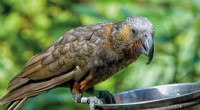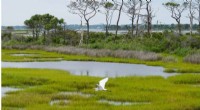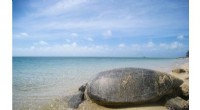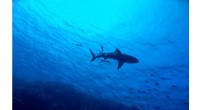
Wetenschap
Difference between cytokinesis in animal and plant cells?
Cytokinesis:Animal vs. Plant Cells
Cytokinesis is the division of the cytoplasm during cell division, following nuclear division (mitosis or meiosis). While the process is similar in animal and plant cells, there are significant differences due to the presence of a rigid cell wall in plants.
Dierlijke cellen:
* Cleavage furrow: Cytokinesis begins with the formation of a cleavage furrow , an indentation on the cell surface.
* Contractile ring: The furrow is formed by a ring of actin filaments and myosin called the contractile ring , which contracts like a purse string.
* Cell membrane invagination: As the contractile ring tightens, the cell membrane invaginates and eventually pinches off, creating two daughter cells.
Plantencellen:
* Cell plate formation: Instead of a furrow, plant cells form a cell plate , a new cell wall that separates the two daughter cells.
* Golgi apparatus role: The cell plate originates from vesicles derived from the Golgi apparatus which fuse at the center of the parent cell.
* Cell wall material deposition: The vesicles contain cell wall material, such as cellulose and pectin, which are deposited at the cell plate.
* Fusion with existing walls: As the cell plate expands, it eventually fuses with the existing cell walls of the parent cell, separating the two daughter cells.
Hier is een tabel die de belangrijkste verschillen samenvat:
| Feature | Animal Cells | Plant Cells |
| --- | --- | --- |
| Initiation | Splitsing voor de vorming van splitsing | Cell plate formation |
| Mechanism | Contractile ring (actin and myosin) | Vesicles from Golgi apparatus |
| Material deposited | Cell membrane | Cell wall material (cellulose, pectin) |
| Final outcome | Invagination and pinching off | Fusion with existing cell walls |
Samenvattend:
* Animal cells use a contractile ring to pinch off the cell membrane, dividing the cytoplasm.
* Plant cells form a cell plate, a new cell wall, derived from Golgi vesicles, to separate the daughter cells.
Both processes ultimately achieve the same goal:dividing the cytoplasm and creating two independent daughter cells.
 Afstand van deeltjes in vaste stoffen en vloeistoffen?
Afstand van deeltjes in vaste stoffen en vloeistoffen?  Wordt zuurstof geproduceerd vanuit een basis in water?
Wordt zuurstof geproduceerd vanuit een basis in water?  Onderzoekers produceren hoogwaardig zeldzame-aardeconcentraat uit steenkool
Onderzoekers produceren hoogwaardig zeldzame-aardeconcentraat uit steenkool Wat is de empirische formule voor een molecuul met 46,8 Si en 53.2 O?
Wat is de empirische formule voor een molecuul met 46,8 Si en 53.2 O?  Voordat er chemici waren, welke bezaaid materie?
Voordat er chemici waren, welke bezaaid materie?
 Wat is de betekenis van wetenschap?
Wat is de betekenis van wetenschap?  Orkaan Dorian treft Bahama's met aanval van categorie 5
Orkaan Dorian treft Bahama's met aanval van categorie 5 Wat is een alledaags object dat een vorm heeft die vergelijkbaar is met de aarde?
Wat is een alledaags object dat een vorm heeft die vergelijkbaar is met de aarde?  Dammen staan onder water, het dodental in Zuid-Brazilië blijft stijgen
Dammen staan onder water, het dodental in Zuid-Brazilië blijft stijgen  De kust van Californië verdwijnt onder de stijgende zee:onze keuzes zijn grimmig
De kust van Californië verdwijnt onder de stijgende zee:onze keuzes zijn grimmig
Hoofdlijnen
- Wat zou er gebeuren als je levercellen in een hyptone oplossing zou stoppen?
- Hoe kan biotechnologie de opwarming van de aarde stoppen?
- Papegaaien geven de voorkeur aan live videogesprekken boven het bekijken van vooraf opgenomen video's van andere vogels
- Wat betekent de wetenschappelijke wiskunde?
- Hoe inktvis en octopus hun grote hersenen krijgen
- Onderscheid u van de kudde:hoe koeien communiceren gedurende hun leven
- Welke drie tings hebben planten nodig voor fotosynthese?
- Wat is de meest waarschijnlijke oorzaak van de grote diversiteit die momenteel wordt waargenomen in meercellige levensvormen?
- Welk orgel heeft geen functie bekende functie?
- Herstel van iconische inheemse vogel veroorzaakt problemen in stedelijke gebieden

- Wat is een wetland? Een ecoloog legt uit

- Cheerleaders helpen bij het ontdekken van bacteriën die beter groeien zonder zwaartekracht

- Stijgende temperaturen veranderen grote populatie zeeschildpadden vrouw

- Orkaan Ian Street Shark-video tart geloof

 Hoe zal klimaatverandering de arctische kariboes en rendieren beïnvloeden?
Hoe zal klimaatverandering de arctische kariboes en rendieren beïnvloeden? Wimbledon Stat Pack helpt het punt uit te leggen
Wimbledon Stat Pack helpt het punt uit te leggen De derde fase in de levenscyclus van een ster?
De derde fase in de levenscyclus van een ster?  Hard als diamant? Wetenschappers voorspellen nieuwe vormen van superharde koolstof
Hard als diamant? Wetenschappers voorspellen nieuwe vormen van superharde koolstof  Strategieën om grotere poriën te genereren in metaal-organische raamwerken
Strategieën om grotere poriën te genereren in metaal-organische raamwerken Een zonne-energiecalculator gebruiken
Een zonne-energiecalculator gebruiken  Hoe lang heb je een paar seconden naar de Eclipse gekeken voordat je je wegdraaide?
Hoe lang heb je een paar seconden naar de Eclipse gekeken voordat je je wegdraaide?  Wat is het effect van zwaartekracht in experiment?
Wat is het effect van zwaartekracht in experiment?
- Elektronica
- Biologie
- Zonsverduistering
- Wiskunde
- French | Italian | Spanish | Portuguese | Swedish | German | Dutch | Danish | Norway |

-
Wetenschap © https://nl.scienceaq.com

